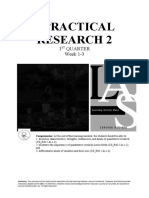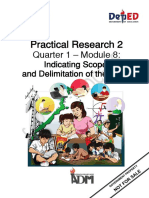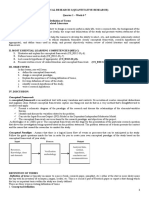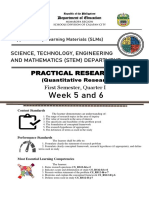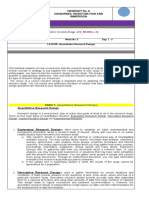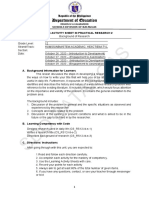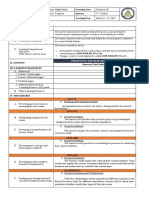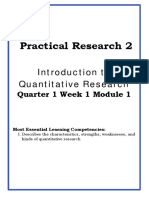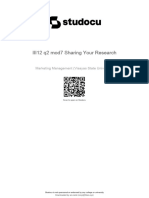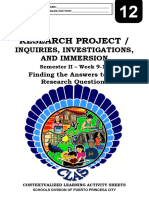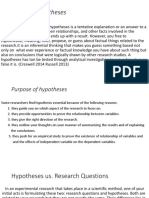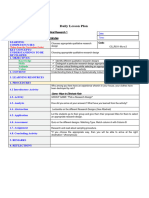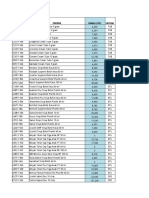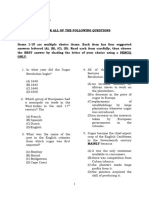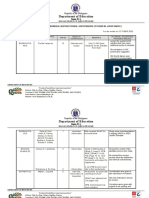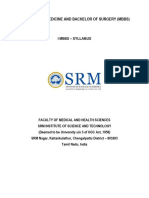0% found this document useful (0 votes)
214 views15 pagesResearch in Daily Life 2 (HRE 121) - LAP 4 - Week 6-7
This course aims to engage students in quantitative research to augment their knowledge in their specific fields. It will develop critical thinking skills through designing and implementing an original research project. The course covers the nature of quantitative research, identifying an inquiry topic, formulating research questions and hypotheses, reviewing literature, collecting and analyzing data, and communicating findings. Assessment includes written works, performance tasks, and exams to evaluate students' understanding of quantitative research methodology and ability to conduct independent research.
Uploaded by
Elle KeiCopyright
© © All Rights Reserved
We take content rights seriously. If you suspect this is your content, claim it here.
Available Formats
Download as DOCX, PDF, TXT or read online on Scribd
0% found this document useful (0 votes)
214 views15 pagesResearch in Daily Life 2 (HRE 121) - LAP 4 - Week 6-7
This course aims to engage students in quantitative research to augment their knowledge in their specific fields. It will develop critical thinking skills through designing and implementing an original research project. The course covers the nature of quantitative research, identifying an inquiry topic, formulating research questions and hypotheses, reviewing literature, collecting and analyzing data, and communicating findings. Assessment includes written works, performance tasks, and exams to evaluate students' understanding of quantitative research methodology and ability to conduct independent research.
Uploaded by
Elle KeiCopyright
© © All Rights Reserved
We take content rights seriously. If you suspect this is your content, claim it here.
Available Formats
Download as DOCX, PDF, TXT or read online on Scribd
/ 15

